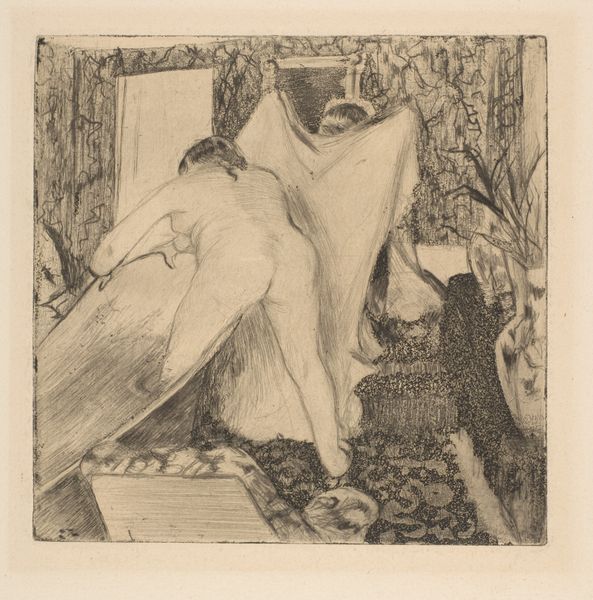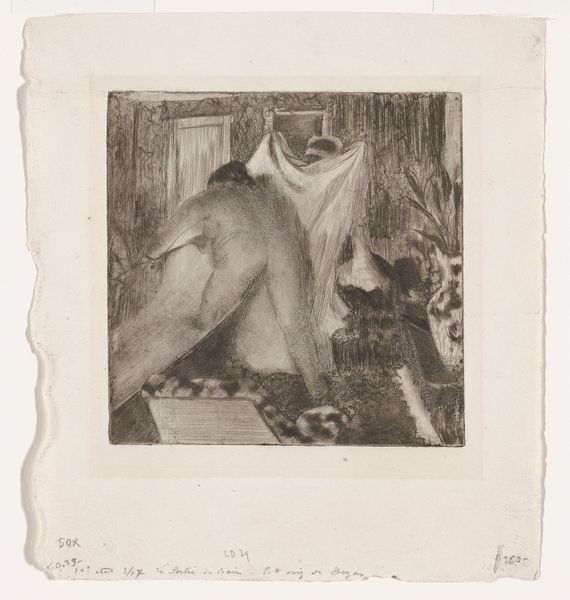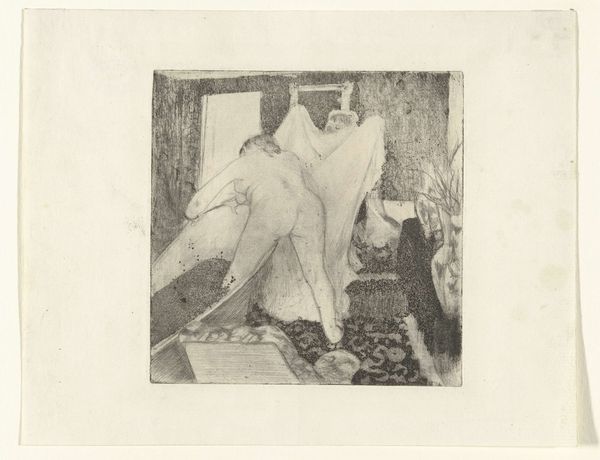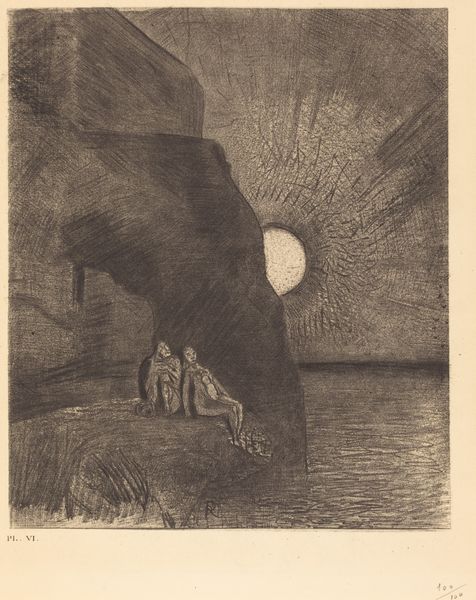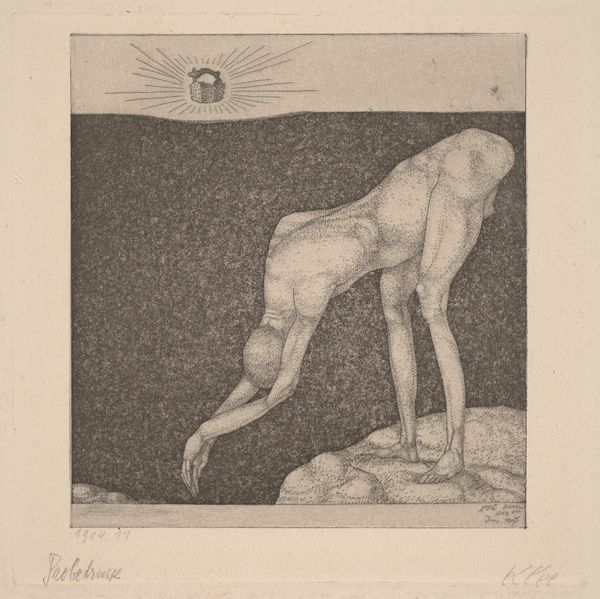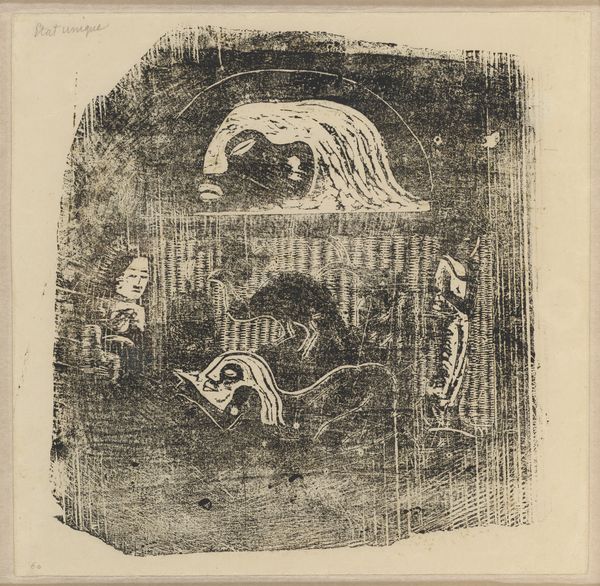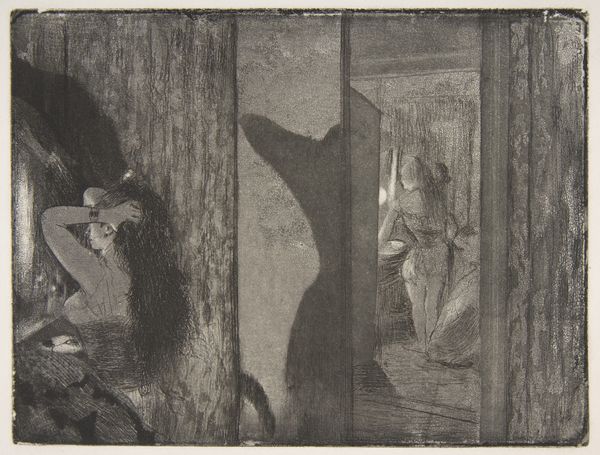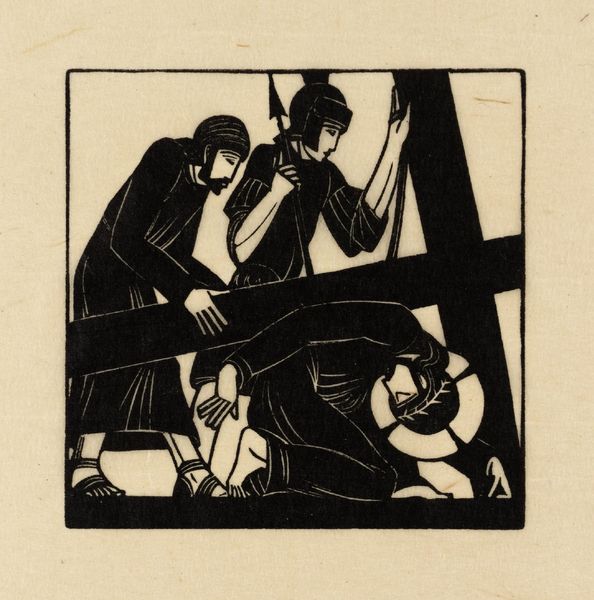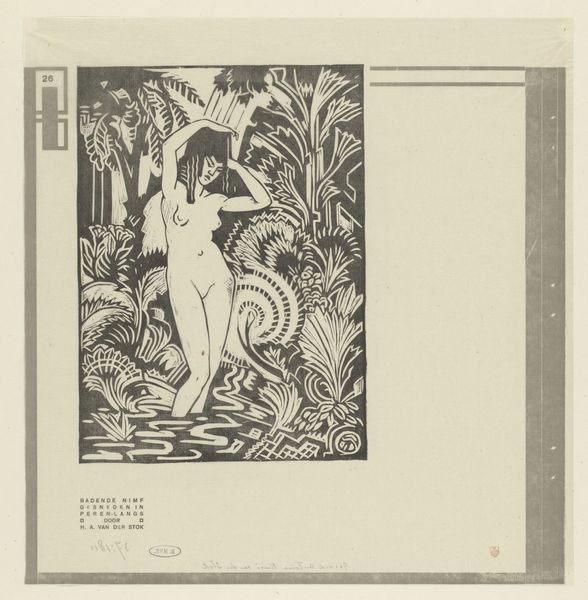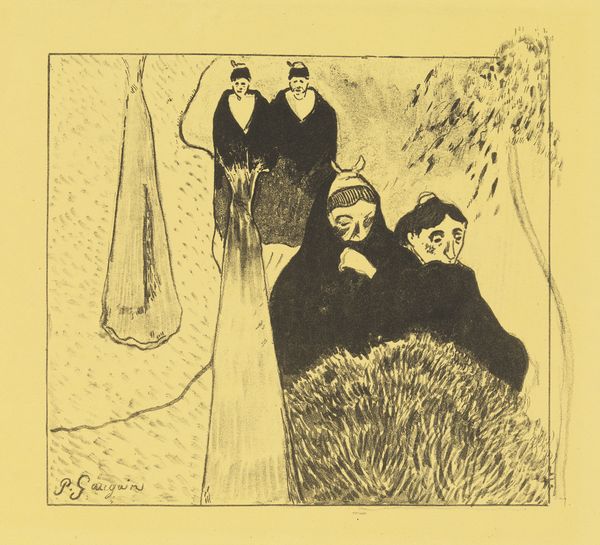
print, etching
# print
#
impressionism
#
etching
#
figuration
#
genre-painting
#
nude
Dimensions: sheet: 23 x 18 cm (9 1/16 x 7 1/16 in.) plate: 12.8 × 12.8 cm (5 1/16 × 5 1/16 in.)
Copyright: National Gallery of Art: CC0 1.0
Curator: Edgar Degas's "Leaving the Bath," created between 1879 and 1880, offers an intimate glimpse into a private moment, rendered through the medium of etching. Editor: The image immediately strikes me as quite stark. The etching feels rough, almost unfinished, and creates a feeling of raw, immediate reality. The lack of color emphasizes the lines and the physicality of the scene. Curator: Indeed. Degas was fascinated by the materiality of printmaking. He experimented extensively with techniques, embracing the process and letting the marks of the etching needle be visible. How do you see that playing into its impact? Editor: It’s fascinating to consider the implications of this process for depicting the female form. During Degas' time, academic nudes were highly idealized, almost sculptures. But here, we have a nude presented with this rough, almost industrial process, that acknowledges labor and its relation to representation. It disrupts the male gaze. Curator: The composition also supports your interpretation. Instead of a glamorous depiction, the woman is caught in a mundane act, leaning to adjust the towel in the aftermath of her bath. Editor: It humanizes her. The fact that it’s not a painting but a print meant it was likely distributed more widely and was possibly more accessible, outside the constraints of traditional exhibitions or the tastes of academic patrons. This image questions those structures and suggests new possibilities. Curator: Exactly. His prints also highlight the influence of Japanese woodblock prints with asymmetrical composition, flat perspective. These elements add another layer to Degas' departure from academic norms. Editor: So, it’s more than just a domestic scene—it reflects shifts in art markets, reproductive technologies and a challenge to what art could and should be, and how a figure would be seen. Curator: Absolutely, Degas used readily available processes and techniques to open dialogues, prompting shifts in artistic perspectives and the status of the nude. Editor: That is precisely the radicality and continued relevance of Degas: not simply as observer but as provocateur of artistic norms, and the institutions propping those norms. Curator: Well said. He makes us consider how an art work and artistic act exists, and that is something quite powerful for audiences today.
Comments
No comments
Be the first to comment and join the conversation on the ultimate creative platform.


